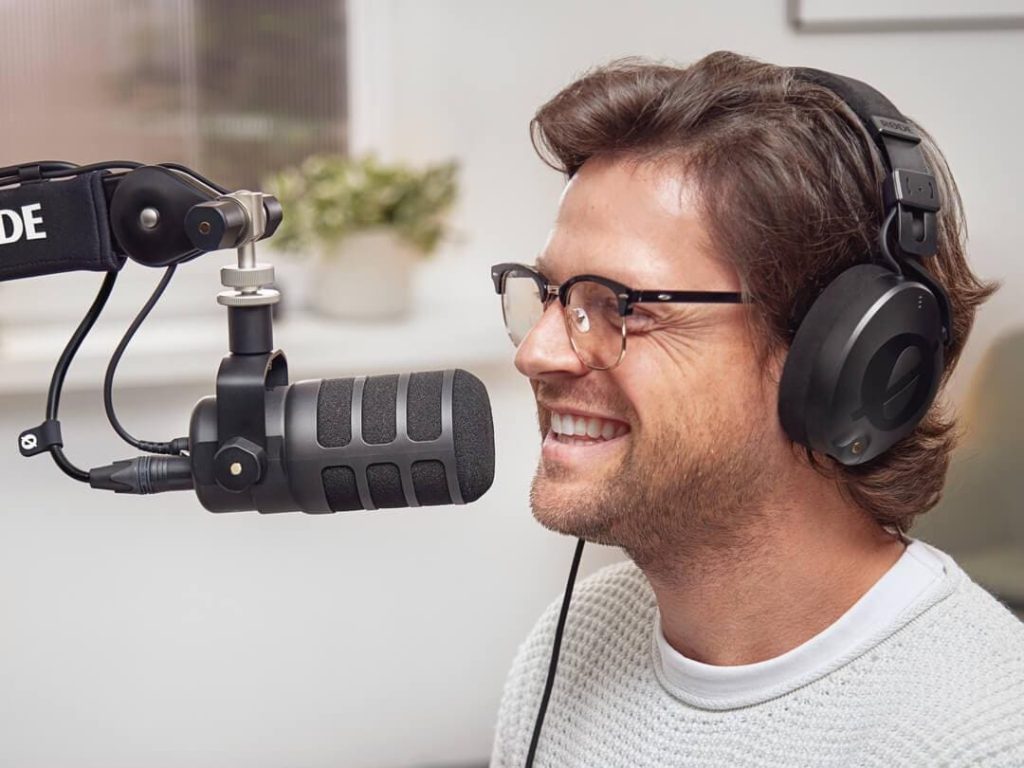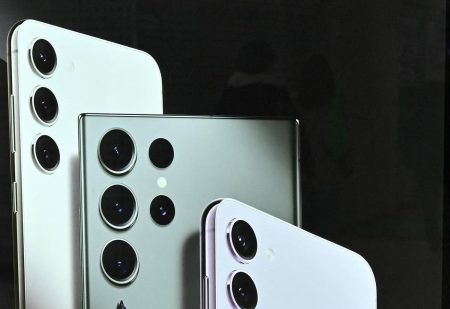One of the most popular podcast microphones has just received a significant upgrade. I’ve managed to get my hands on a review sample of the new PodMic USB to see if it is a genuine improvement over the previous XLR-only version of this dynamic microphone.
Alongside the Shure SM7B, the RØDE PodMic is probably one of the most popular microphones with podcasters worldwide. This new version looks almost identical to the previous PodMic, but RØDE now ships it with one of the best-looking windshields/pop filters I’ve ever seen. The filter is silicone and foam construction that slips over the entire front of the mic. I suspect part of the reason for this change is cosmetic rather than sonic.
In these days of video podcasts, microphones are seen as much as they are heard. We’ve all grown used to the ubiquitous Shure SM7B and RØDE PodMic on countless podcasts; adding a large and distinctive windshield to the PodMic, RØDE has given it more visual appeal and personality. The PodMic was always fairly good at rejecting plosives, but with its new windshield, the PodMic becomes unmistakable when seen on-screen.
The big difference with the new PodMic USB is that it now has a USB-C interface alongside the existing XLR connector. And like most good USB microphones, the PodMic has a headphone jack and built-in amplifier to provide zero-latency monitoring so the user can hear their voice and the audio from the host computer.
RØDE has worked wonders in shoehorning the USB electronics into the compact shell of the original PodMic. Everything about this microphone is beautifully constructed and finished. There is a headphone volume control at the rear of the mic, just above the XLR socket. The volume control is a beautifully knurled brass wheel that doubles as a mute for monitoring when pressed in USB mode.
If you’re unfamiliar with the RØDE PodMic, it’s a broadcast-quality dynamic microphone with a cardioid polar pattern. For the money, it offers incredible value. It’s a front address mic meaning you speak into its end. Dynamic mics are excellent at rejecting the acoustics or noise of a room.
Even when not used in a studio, the ability to sound good in all conditions makes dynamic mics popular with podcasters when recording on-location where the acoustics may be less than ideal. The downside of using a dynamic mic is that they can be less sensitive than a condenser mic and, therefore, harder to drive.
To put the new RØDE PodMic USB through its paces, I tested with the XLR connection to see if this new version was any easier to drive. It seems like there’s no change from the earlier PodMic. It is the same old PodMic we know and love, but it’s not any easier to drive. No matter which USB audio interface I tried – Focusrite Scarlett 2i2, EVO 4 and Audient i4 – the PodMic USB still required a lot of gain when used with the XLR connector.
Finally, I tried the XLR connection with the new RØDECaster DUO, which was a completely different story. RØDECaster’s superb Revolution preamps easily drove the PodMic USB and had gain to spare. The lesson here is to ensure your audio interface has sufficiently muscular preamps if you use the XLR connection of the PodMic USB.
Next, I tried the mic’s USB connection. I was slightly surprised that the PodMic USB tops out at 24-bit and 48kHz resolution; some other USB microphones will go as high as 192kHz. However, for podcasting or broadcasting, this limit on the resolution isn’t too important, but musicians might prefer a bit more headroom.
The PodMic USB is easy to drive with the USB connection and provides excellent output levels. The zero-latency monitoring provided by the built-in headphone jack is excellent and hiss free. RØDE has done a superb job bringing USB functionality to the PodMic without spoiling the XLR performance or altering the general sonic character of this well-loved mic.
Everything else about the PodMic USB remains the same. The build quality is as good as ever, while the sound quality is excellent and the frequency response of 20Hz to 20kHz is ideal. Like most dynamic microphones, the PodMic USB isn’t quite as deep and resonant as a good condenser mic. The EQ slightly favors the top end, but it is nothing that can’t be cured with compression or by using the mic with RØDE Central to access its built-in APHEX processing to add some “Big Bottom.”
Verdict: RØDE has triumphed with the PodMic USB. This fabulously versatile microphone now offers the best of both worlds. Whether it’s used to record a multi-guest podcast with a mixing desk like the RØDE ProCaster and XLR connection or hitching the mic up to a laptop for on-location recording or outside broadcast, the RØDE PodMic USB offers superb value for money. The sound is as good as ever, but the convenience of the USB option adds a whole new dimension and is well worth the modest uplift in price. Up to four RØDE PodMic USB mics can be grouped using RØDE’s Connect software with its virtual mixer. With this setup, you can easily record a podcast with up to four mics and a laptop. If you are looking for an excellent value podcast mic with XLR and USB, the RØDE PodMic USB is unbeatable.
Pricing & Availability: The RØDE PodMic USB is available now from RØDE dealers. The price is $199 / £199 / €239.
More info: www.rode.com
Tech Specs:
- Acoustic principle: Dynamic.
- Polar pattern: Cardioid.
- Address type: End
- Frequency range: 20Hz – 20kHz.
- Output impedance: 460Ω (XLR).
- Maximum SPL: 148dB SPL.
- Equivalent Noise (A-Weighted)
- Analog: 26dBA.
- Digital: 19dBA.
- Sensitivity: -57 dB re 1 Volt/Pascal (1.4 mV @ 94 dB SPL) +/- 3dB.
- Analog output connectors: 3-pin XLR, 3.5mm headphone jack
- Digital power requirements: Via USB: 5V @ 100mA.
- Output connection: USB-C.
- Bit depth: 24-bit.
- Sampling Rate (kHz): 48kHz.
- Processing: APHEX digital signal processing:
- Minimum OS requirements: Windows 10/Mac OS 10.15.
- Weight: 900g.
- Dimensions (LxWxH): 123 x 109 x 110.
Read the full article here









